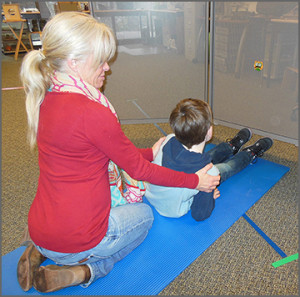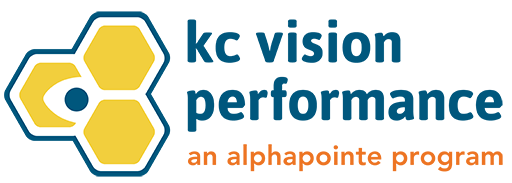How we use our eyes, how we see, and how we make sense of information we take in is the result of a complex series of events that stems from what we experienced in our own unique developmental stages and connections in the brain which occurred during our formative years.
The foundations for developing oculo-motor, visual perceptual, and visual-motor integration skills are established during the first year of life when our neural pathways are formed between our eyes, our brain, and our body.

Primitive reflex testing
Vision is dependent upon one of these pathways, the vestibular-oculo reflex, which is responsible for the exchange of information between the vestibular mechanism (the balance mechanism), the eyes, and reflex response to incoming stimuli.
Primitive reflexes are the building blocks of development, are present in the womb, and last for about one year. At this time, the reflex integrates or incorporates into the higher learning levels of the brain. Movement is the key that helps the reflexes become integrated. If a reflex does not integrate, it is considered retained or present, existing past the typical developmental stage. Integration is how the reflexes coordinate into the more mature forms allowing the body to appropriately function as a unified whole.
Early primitive reflex patterns are critical for developing more complex movements, skills, and, behaviors. However, primitive reflexes should only have a limited life-span and then be integrated or controlled by higher centers of the brain. This allows more sophisticated neural structures to develop, which then allow the infant control of voluntary response.
Once integrated, primitive reflexes provide a strong foundation for more sophisticated and special voluntary movement patterns, such as those needed for good eye control, focusing, eye teaming, bilateral integration, eye-hand coordination, and visual-motor integration.
